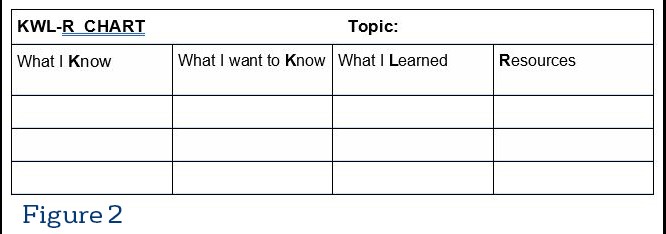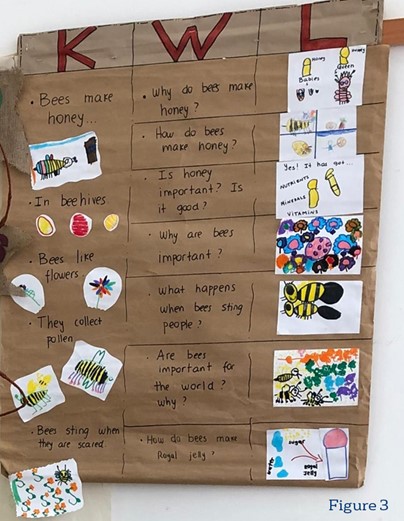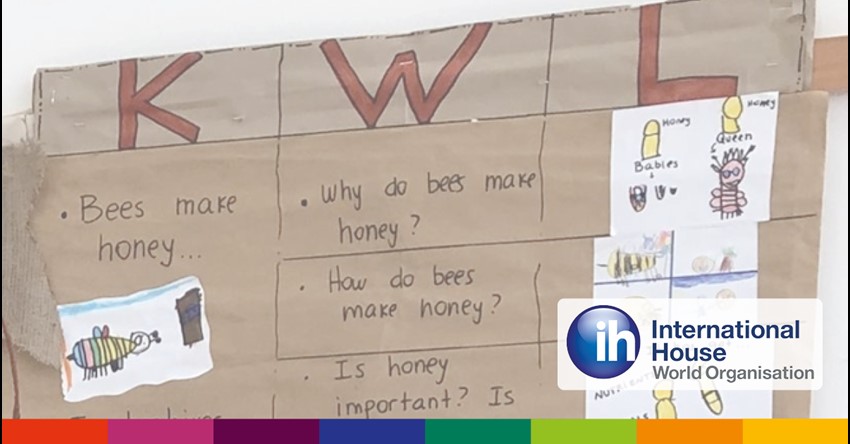How to make EFL learning meaningful to YLs through inquiry
By Cecilia Cabrera Martirena
“Knowledge deepens and expands through inquiry”, Lenz (2015)
When we see babies interact with the world around them, we see how curiosity emerges. Inquiry, then, becomes a natural path that children use to interact with, and make sense of, the context they are in. These inquiry skills will develop in the early years and in time help consolidate a lifelong learner, depending on how the adults around these babies stimulate their desire to learn.
Curiosity killed by the cat?
Unfortunately, I can say from experience that, as learners move up in the school grades, at least in EFL teaching and learning in my country, there are fewer opportunities for deep, meaningful learning as there are fewer possibilities for them to generate inquiry/curiosity-based questions. The general expectation from EFL teachers and education authorities is that learners are capable of answering questions that teachers formulate and/or just manage to generate questions to clarify some given content.
One certain path to keep inquiry alive and use it to make EFL teaching and learning much more effective, meaningful and rewarding is through Inquiry-Based Learning (IBL). This approach allows for the active participation of our young learners (YLs) and very young learners (VYLs). It provides a meaningful context to use the target language, facilitates the development the learners’ thinking skills, and invites them to generate open questions, which may lead to new concepts. IBL is a learner-centred approach where teachers take a different role from the one in traditional approaches. Teachers in IBL encourage inquiry through open-ended questions, encourage reflection, guide observation and reasoning. At the same time, teachers document the learning and the teaching processes and promote the involvement of the whole learning community in the learners’ development and growth. Teachers become mediators of learners’ learning.
As you can see in Figure 1 (source here) , the cycle of the Inquiry Process is defined by the interaction between the teacher, the learners, the target of the inquiry, the language needed to accomplish the task and the documentation collected during the inquiry/learning process. Observation and documentation of the learners’ interactions, their questions and their language needs will set the tone of future tasks and decisions regarding the development of the children’s learning strategies.

The cycle involves Divergent and Convergent thinking. These are two essential thinking strategies to solve problems creatively. According to Khatri and Dutta (2018), divergent thinking allows us to identify multiple ideas to solve problems; it helps us in identifying varied possible solutions. It has to do with exploring possibilities. On the other hand, convergent thinking will give us the resources to analyse the different ideas, reflecting on such ideas, improving them and choosing the best one possible. As a result, in IBL, learners should have the time and space to use and develop both, Divergent and Convergent thinking.
Some tips for success
KWL-R Chart
One way to promote inquiry that I find really useful is to create a KWL-R Chart with the learners (Figure 2).

This chart is an effective instrument to work with the children through the inquiry process. To begin with, we invite the learners to share their previous knowledge, beliefs and ideas on the topic chosen and we document their contributions in the first column. This can be done with all the group, in pairs, teams, as you find suitable for your children. We then need to find out what the learners want to know on the topic. At this stage, it is important that the teacher triggers questions or comments on some aspects of the topic the learners might not mention, not because they are not interested in but just because they are quite young and they need help to start developing divergent thinking skills.
 The third column might be completed as the children work through the process and find answers to the questions they had documented before, or answers to many other questions that may arise during the research process. It is important to consider this chart as dynamic; therefore, new questions may emerge as the learners start getting into the topic and making connections with different areas of knowledge. From here on, the learners will be leading the teaching and learning process. The last column may be added to the chart or not. Many times the chart is only KWL (see Figure 3, source: Courtesy of Teacher Fiorella Anguera.
The third column might be completed as the children work through the process and find answers to the questions they had documented before, or answers to many other questions that may arise during the research process. It is important to consider this chart as dynamic; therefore, new questions may emerge as the learners start getting into the topic and making connections with different areas of knowledge. From here on, the learners will be leading the teaching and learning process. The last column may be added to the chart or not. Many times the chart is only KWL (see Figure 3, source: Courtesy of Teacher Fiorella Anguera.
Montevideo, Uruguay). However, I find relevant the fact that learners document the different resources available to look for the answers to the questions and others that may be necessary to find along the inquiry process.
I always recommend teachers to have this KWL-R chart in class, on the wall of the classroom. This allows the learners to follow their progress. It also becomes a resource for reflection and a document to share with other teachers, learners and families.
Motivation and time
Inquiry-based projects may last weeks, months or even the whole year. It will depend on the teacher’s and learners’ interest and motivation. It is really necessary for the success of the inquiry project that teachers are really interested in the topic or area chosen. As you know, motivation is contagious; therefore, children will love and will be willing to learn as much as possible on a topic their teacher loves. On the other hand, it is very important that teachers notice the variation on the motivation and enthusiasm of the group and act accordingly.
FAQ
Now, some common questions among EFL teachers are:
- How do I teach the content in the syllabus if I follow the learners’ interests?
- Will I be able to complete the coursebook?
- How do I deal with L1 if I teach through IBL in a YL or VYL class?
To address the first question, it is important to make it clear that even though the learners take an active role in defining the inquiry topics, the professional intervention of the teacher is unavoidable. We, teachers, as professionals in EFL teaching and learning, are the ones to trigger the learners’ interest in the area we want them to work on. As an example, if you want your five-year olds to focus their inquiry on the importance of drinking water in our life, you need to plan how to generate their interest in the topic, how to fuel their curiosity. It might be through a story, taking advantage of a rainy day, questioning the learners at snack time as they drink water in class. It only needs us to be alert and have a clear aim. Then, we will help them elaborate the questions they want on the topic and guide them in their inquiry to find the answers to those questions.
Regarding EFL learning, the children will be showing the attentive teacher what language they need in order to move on in the inquiry project. Going back to the example of drinking water, let’s pretend some children are working on finding out why some families in our city buy bottled drinking water instead of drinking tap water. As part of the inquiry, children may visit a water-bottling plant to find out about the bottling process. It is important then that children document their findings. Therefore, the teacher will have to teach the necessary vocabulary of the parts of the bottles, areas of the plant, etc. In addition, learners would be interested or it might be suggested by the teacher, to document the bottling process. In this case, verbs will be taught, different tenses of those verbs, even passive voice!
With reference to the second question, I find that the coursebook is a resource that teachers have to work on certain areas of the language in an explicit way. Whenever the teacher finds it necessary to reinforce a language skill, a structure or lexical item, they have the coursebook to use. As a result, the units in the coursebook are covered, depending on the skill or language system the teacher finds it necessary to work on. So, using the example above, our five-year olds will need to learn the vocabulary to describe drinking water itself, how to describe the purification process of the water, how it reaches our homes, and many other language, vocabulary or lexical chunks the teacher may find relevant. In this case, the coursebook will be of great help for the teacher to tackle these language needs.
In the case of the use of L1 with YLs and VYLs, the balance between L1 and L2 will be kept as long as the teacher uses a good balance of both in class. The teacher should use the language naturally, speaking at a regular speed and using structures and lexis that may be a bit above the learners understanding. But please, bear in mind that we all understand much more complex language than that we produce. However, it is important that the teacher does not underestimate the learners because of their young age and uses the target language as much as possible in class. When working orally, use all the resources you may have to facilitate understanding such as body language, pictures, music, miming. It is amazing to see how much L2 language YLs and VYLs understand and start to produce if we expose them regularly to a meaningful, rich but comprehensible input. One thing to take into account is that YLs and mainly VYLs, as part of the learning process use both L1 and L2 in the same sentence to be able to communicate.
Essentially, inquiry-based learning provides a natural approach to learn EFL. The motivation to understand the topic, to find a solution to a real problem or the answer to an overall question pushes the learners forward to learn the language. It encourages our children’s natural curiosity and sense of wonder about the world around them. As Sobel and Legare (2014) point out, “The child is an active seeker of information—regardless of what kind of knowledge they are acquiring. Regarding causal knowledge, children begin to generate ‘why’ questions around the time they themselves offer causal explanations”. And Gopkin (2017:135, 136) explains, “Children don’t just want more information about the world; they want causal information that will let them understand the world in a deeper and broader way - information that will enable future learning.”
|
References Gopkin, A. (2017) The Gardener and the Carpenter. New York, N.Y.: Picador. Focus on inquiry: a teacher’s guide to implementing inquiry-based learning. http://blogs.ubc.ca/stevemcg/files/2014/09/Focus-on-Inquiry-teacher-guide.pdf Accessed, September, 2019. Khatri, P. & Dutta, S. (2018). Divergent Thinking- It’s Time to Change the Box!. Available from: https://www.researchgate.net/publication/329483880_Divergent_Thinking-_It%27s_Time_to_Change_the_Box (accessed Oct 26 2019). Lenz, B. (2015).Transforming schools. Using Project-Based Learning, Performance Assessment and Common Core Standards. San Francisco, CA: Jossey-Bass. Sobel, D.M. Legare, C.H. (2014) Causal learning in children 2 WIREs Cogn Sci 2014. doi: 10.1002/wcs.1291 https://static1.squarespace.com/static/53485734e4b0fffc0dcc64c2/t/53ac16d3e4b0a7d6603b3a10/1403786963962/causal-learning-in-children.pdf (Accessed August, 2019) Tingle, J. (2015) Emergent Curriculum-Cycle of Inquiry (EC-COI): A Conceptual Model for Emergent Curriculum Operationalized through Planning Artifacts. Chicago, IL https://www.researchgate.net/publication/301892569_Emergent_Curriculum-Cycle_of_Inquiry_ECCOI_A_Conceptual_Model_for_Emergent_Curriculum_Operationalized_through_Planning_Artifacts. (Accessed October, 2019). |
Author's bio: Cecilia Cabrera Martirena has been an EFL teacher for more than 30 years. Among other, she has been a Teacher Educator at State Teacher Education Institutes and at International House, Montevideo. She has been accredited Programme Leader by Cambridge Assessment International Education. For the last 15 years she has been conducting CPD workshops in UK, Brazil, Argentina and Uruguay.

